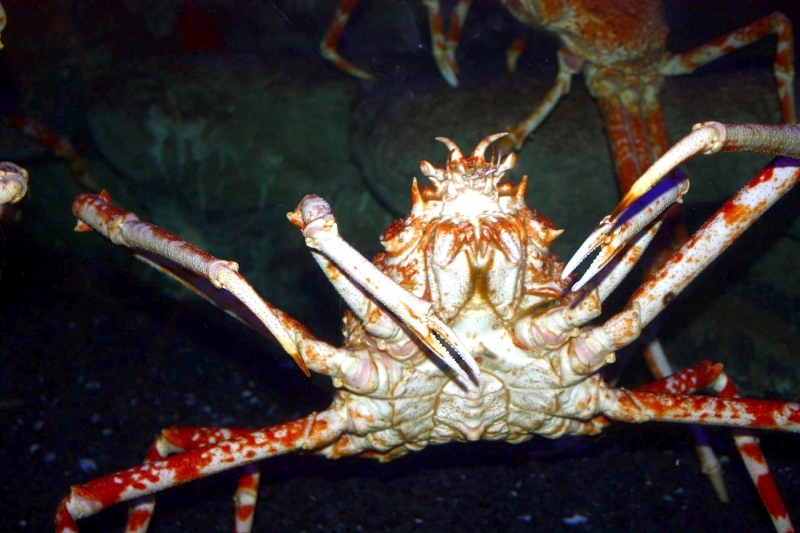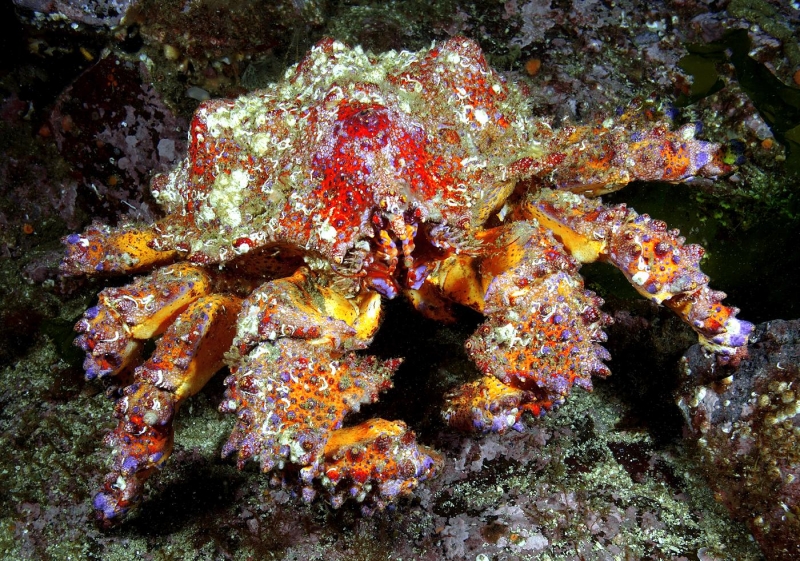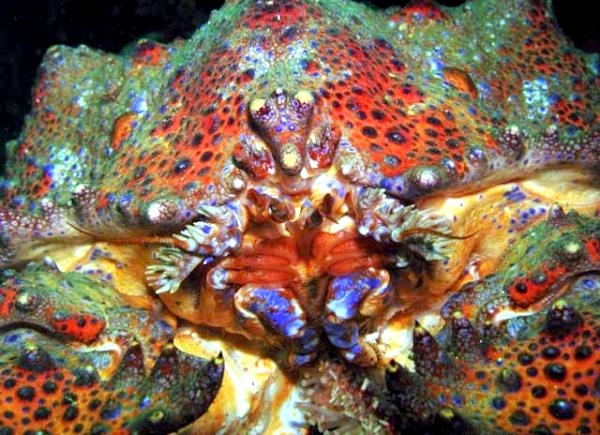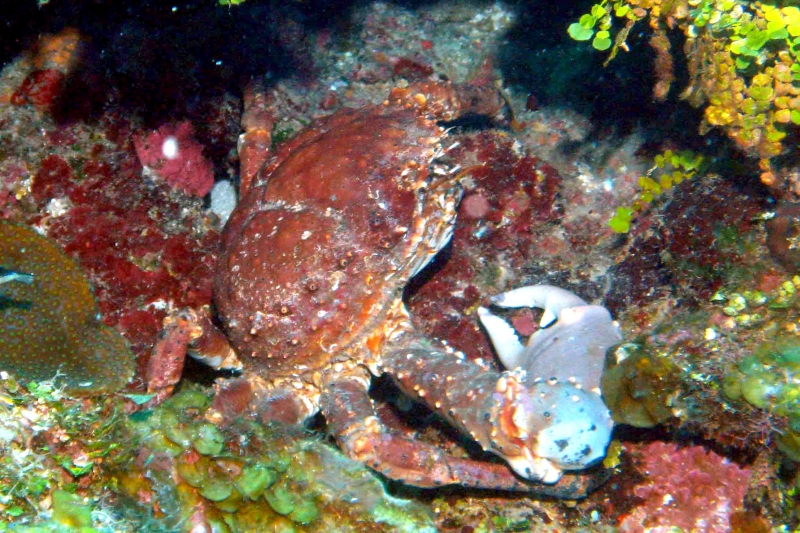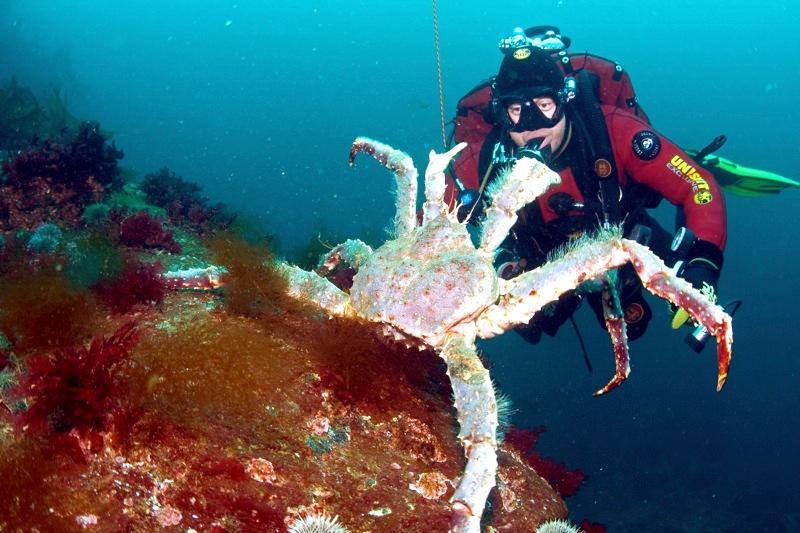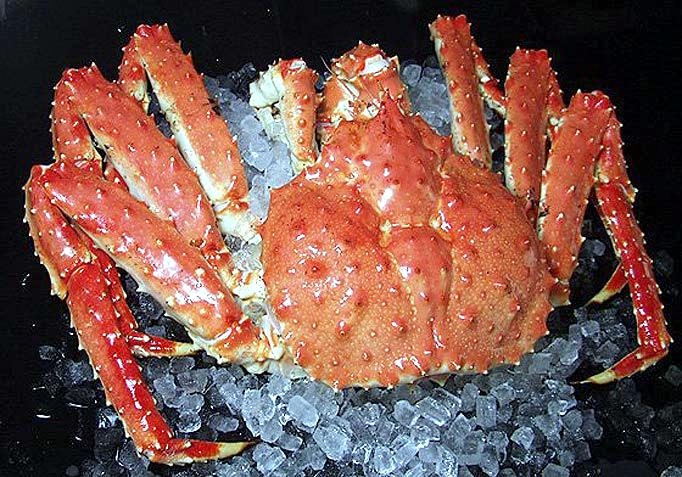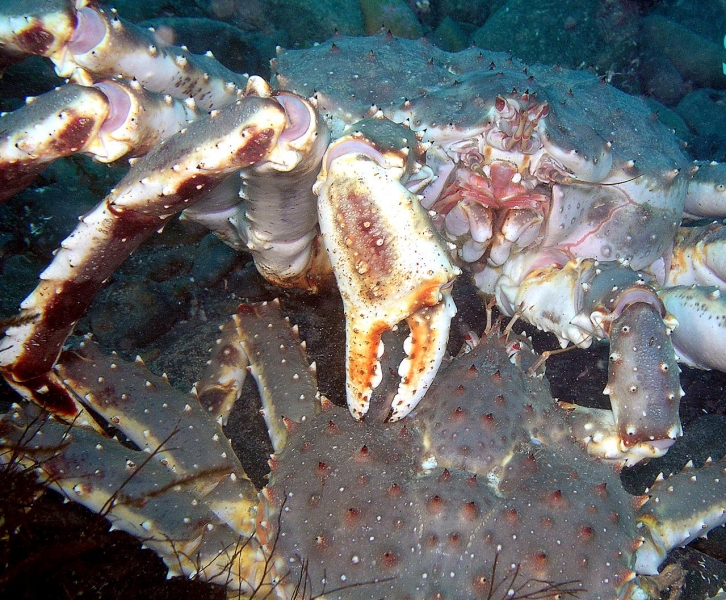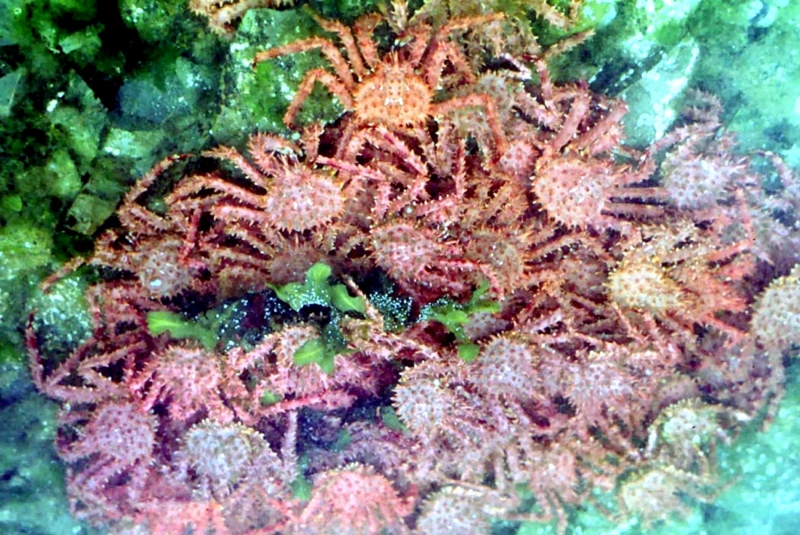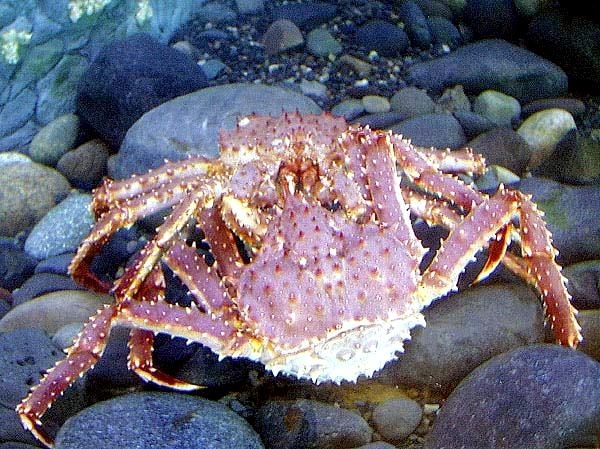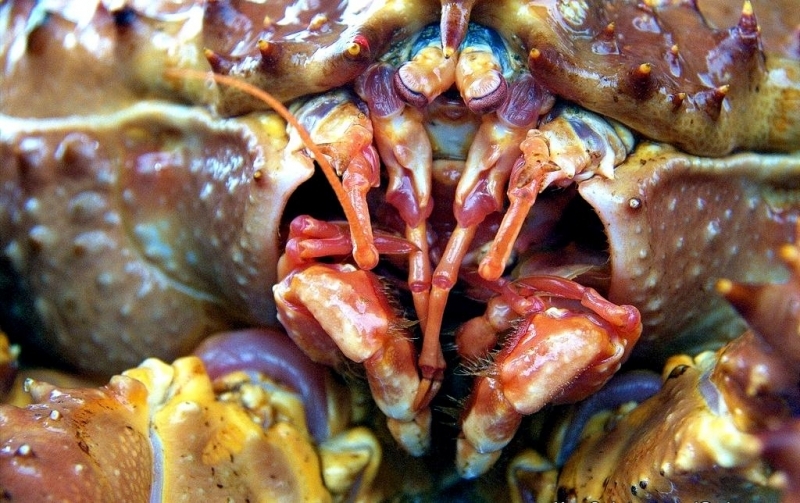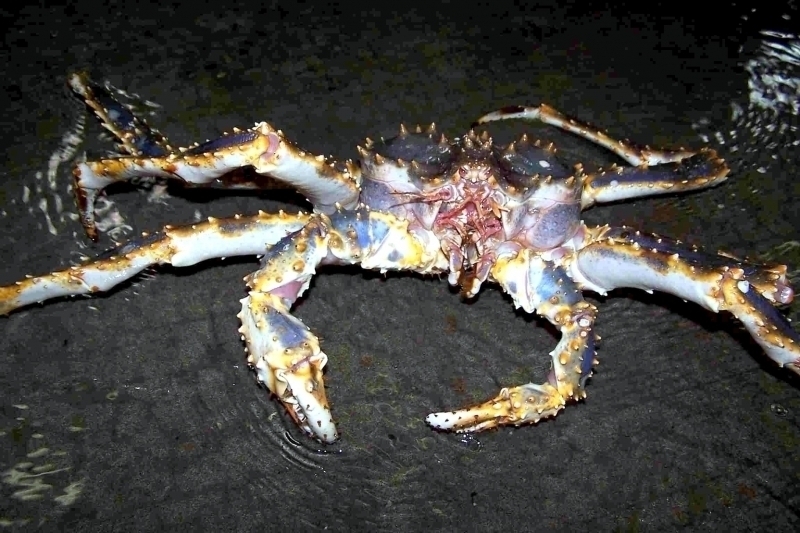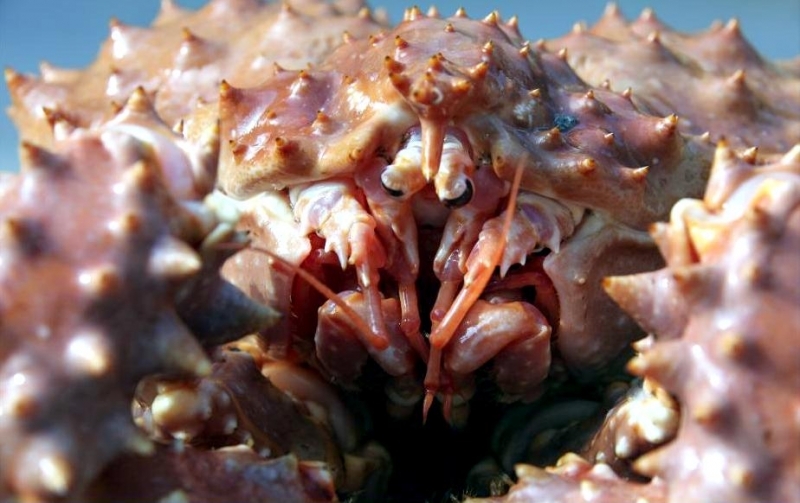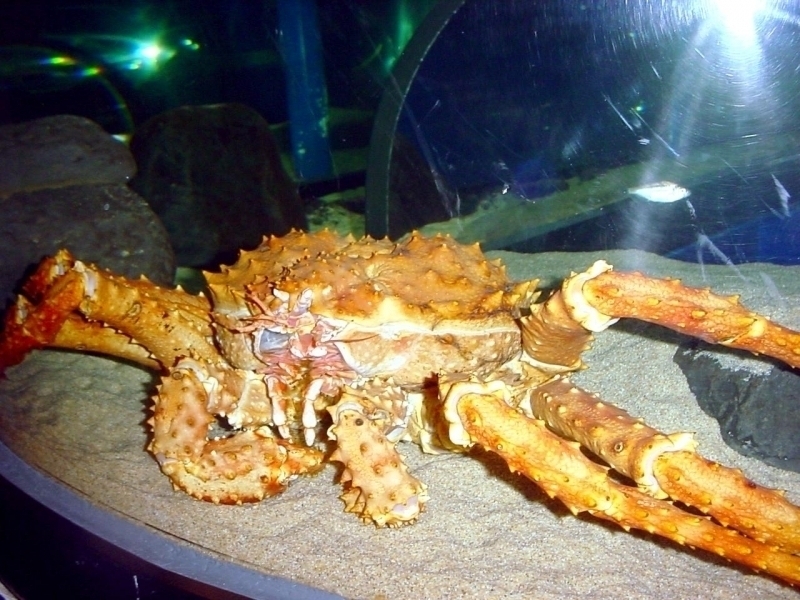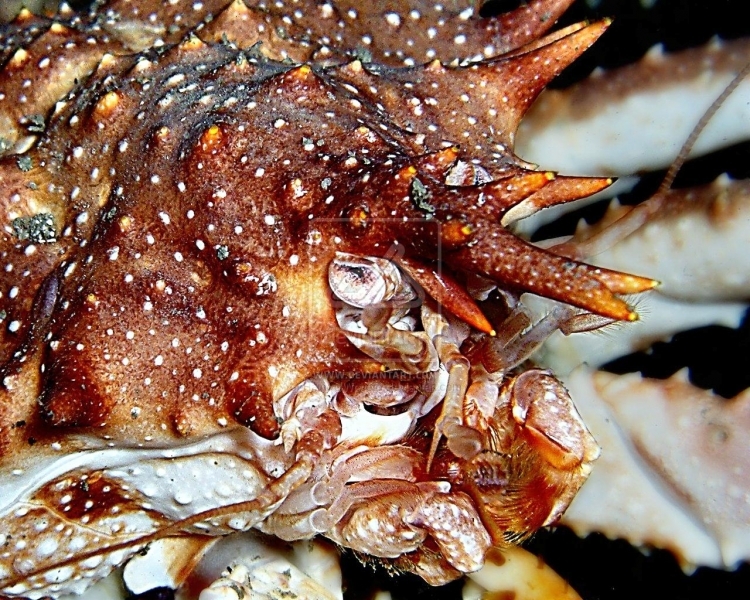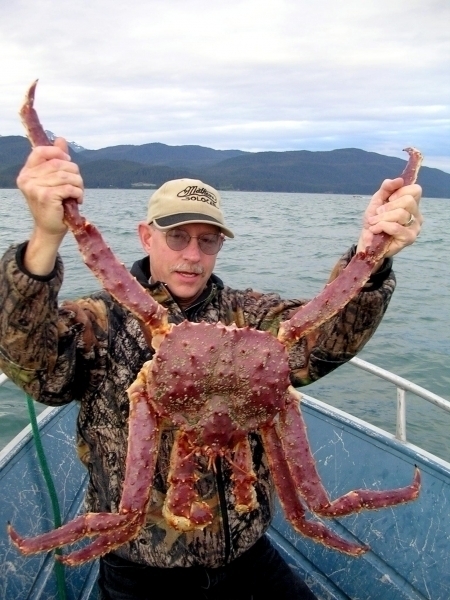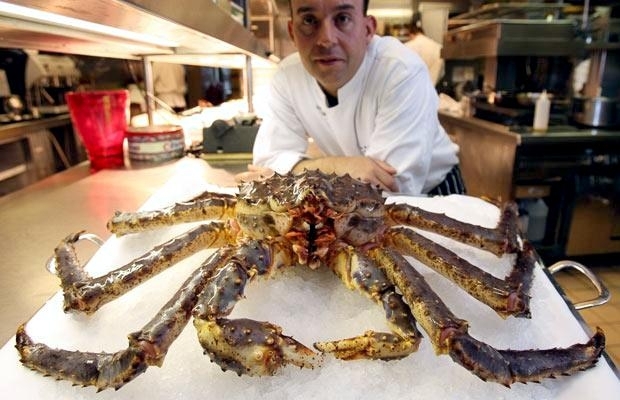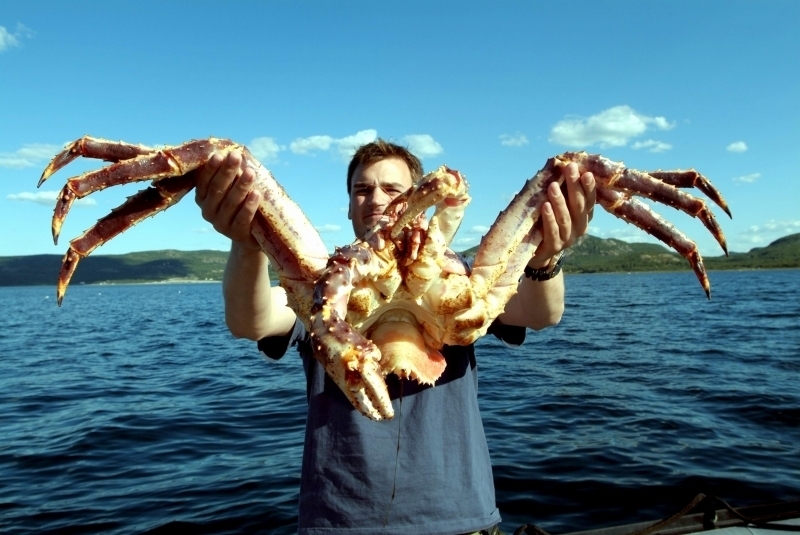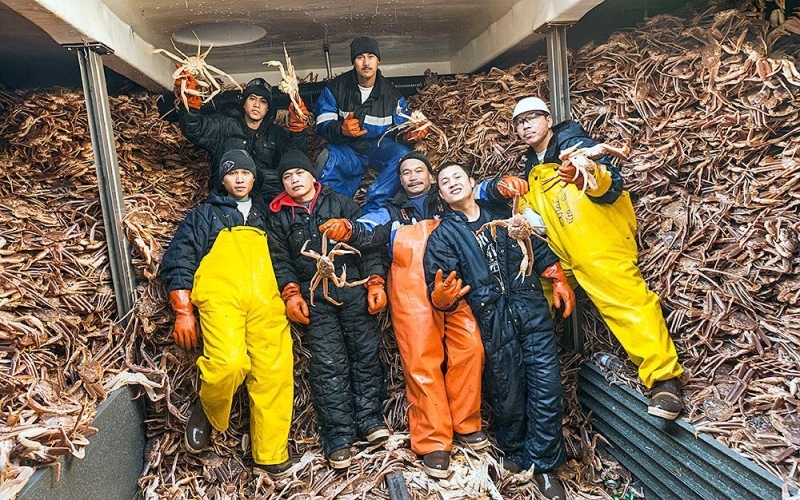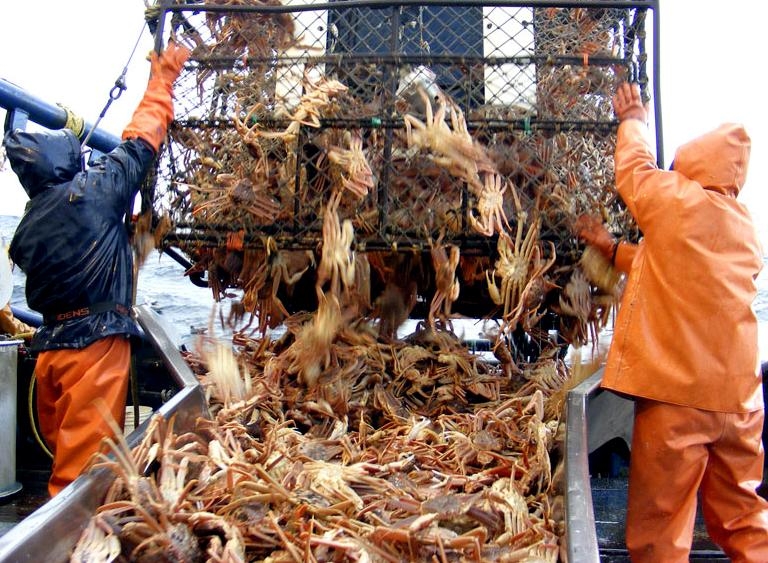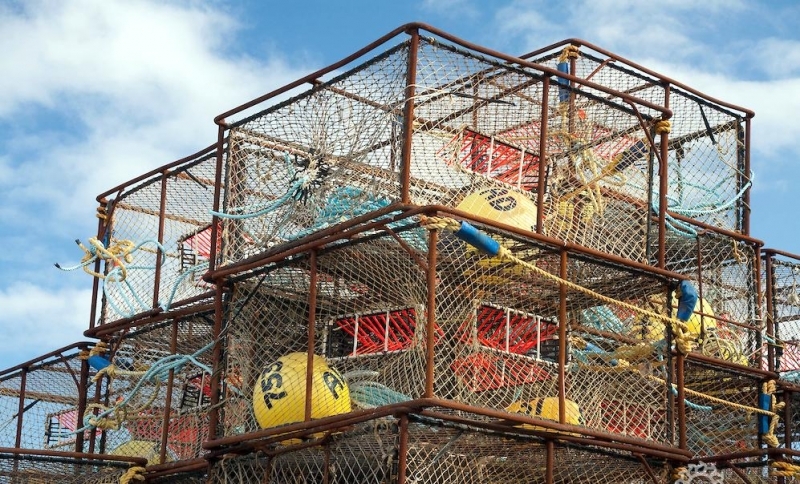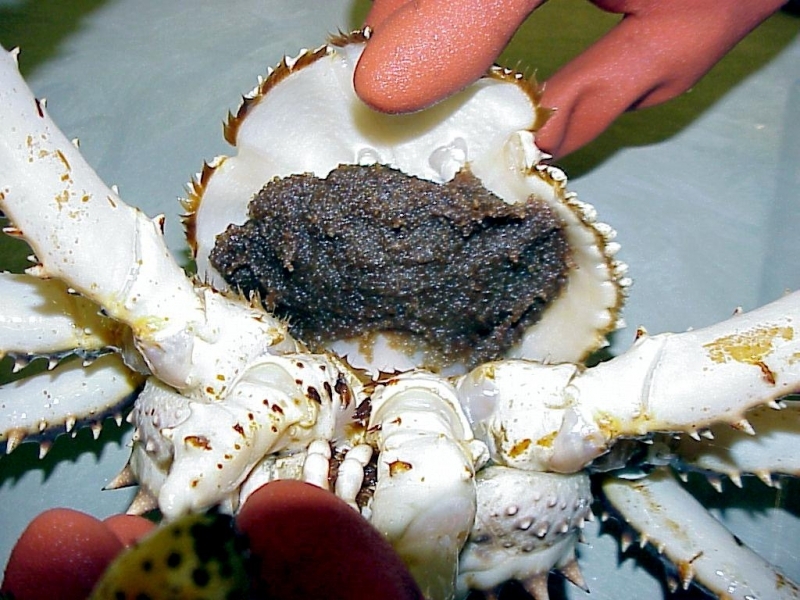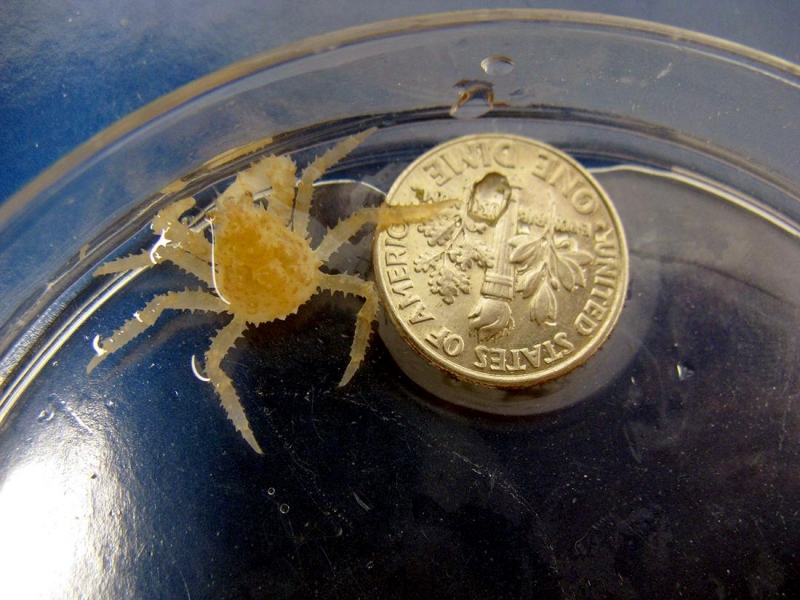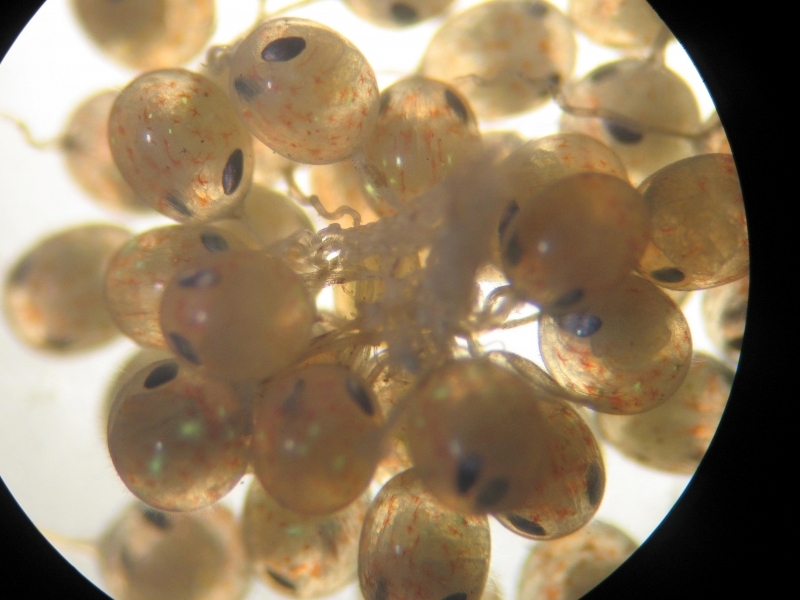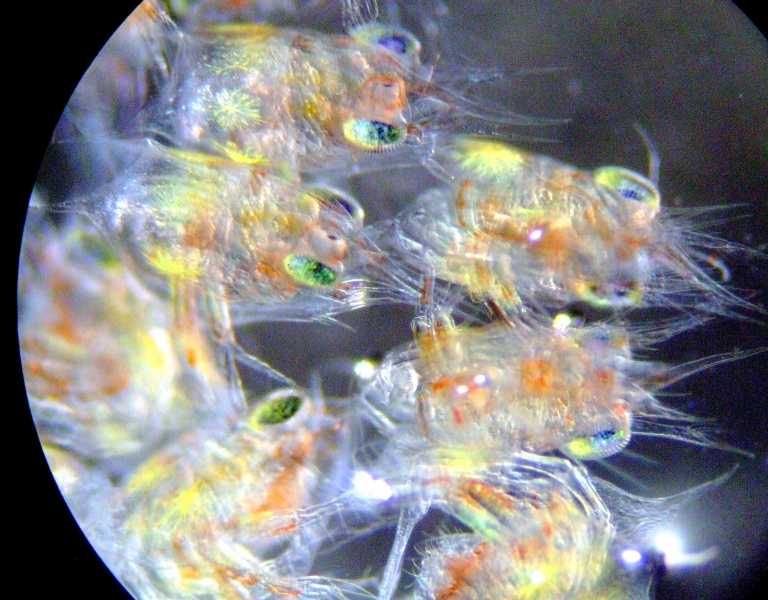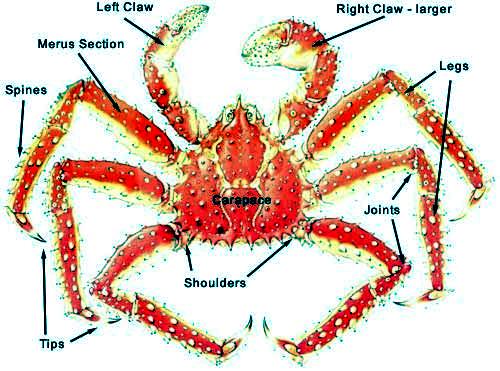“Paralithodes camtschaticus”
King Crabs are a species of large crab that appear dark red or burgundy in color. King Crabs can grow very large with carapace (the shell covering their back) lengths up to 11 inches and a 5 foot leg span. King Crabs have “tails” or abdomens that are distinctive, being fan-shaped and tucked underneath the rear of the shell. Male King Crabs grow larger than females and their sex is determined by examining their abdomens. Males have a narrow abdominal flap whereas females have a wide abdominal flap that covers most of the underside of the abdomen. King Crabs are a member of a super-family of decapod crustaceans also know as “Stone Crabs”.
These large crustaceans are known and prized for their long legs, the longest of which can reach almost 3 feet. King Crabs have 5 pairs of legs. The first pair are pincers; the right pincer is the largest of all the legs. These claws serve the crabs when they need to capture food or fend off aggressors. The next 3 pairs get them around the ocean floor; the final pair tuck under their shells (carapaces) and serve in mating. These specialized legs are used by adult females to clean their embryos (fertilized eggs) and the male uses them to transfer sperm to the female during mating. Like other crabs, King Crabs must molt in order to grow. It’s normal for King Crabs to molt up to 20 times in their lifetimes, including up to 10 times during their first year of life. They shed their hard shells multiple times a year until they’re sexually mature. Female King Crabs must molt annually to mate; males molt less frequently as they age, sometimes going 3 or more years between molts. Females carry their eggs about a year before they hatch. Like most other crabs, King Crabs hatch from eggs that swim as shrimp-like larvae, feeding on tiny organisms. Unlike most other crabs, King Crabs go through a molting stage when they can’t eat before they make their way to the sea’s floor.
